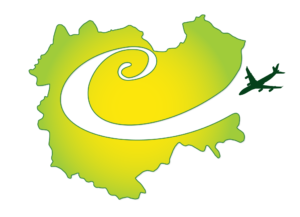Charlestown – Baile Chathail
 Tá Baile Chathail suite in oirthear Mhaigh Eo, gar do Bhéal Lathaigh I gContae Shligigh agus an teorainn le Contae Ros Comáin. Ceantar tuaithe atá tímpeall air le aibhneacha, coillte, portaigh agus páirceanna. Is féidir na Sléibhte Daimh a fheiceáil ar an dtaobh ó thuaidh den bhaile.
Tá Baile Chathail suite in oirthear Mhaigh Eo, gar do Bhéal Lathaigh I gContae Shligigh agus an teorainn le Contae Ros Comáin. Ceantar tuaithe atá tímpeall air le aibhneacha, coillte, portaigh agus páirceanna. Is féidir na Sléibhte Daimh a fheiceáil ar an dtaobh ó thuaidh den bhaile.
History
Centuries ago, like much of the surrounding region, the Charlestown area was heavily wooded. Local people raised livestock and led a nomadic style of life. As the area became more populated by new waves of settlers, the woodlands were cut down resulting in green pasture land, bogland and swamp. It was on this resulting land, known at the time as Dillonstown, that the town of Charlestown was built.
The Dillon family came to Ireland during the Norman invasion. They owned land in much of the Connaught region including a vast area in County Mayo. Charles Strickland, land agent for the Dillon family, realised the need to develop a new town situated in County Mayo. The local market town at the time – Bellaghy, Co. Sligo – often discriminated against tenants from the Dillon estate, and offered them lower prices for their goods and services.
The Square – Charlestown
 Lord Charles Dillon granted permission in 1845 for the construction of the new town. To encourage construction, Strickland offered a prize of several acres of land to the owners of the first house constructed in the town. New buildings were required to be two stories tall and would have road access to both the front and rear of the building. Public houses would have two entrances – one private and one public. The first house constructed belonged to a Mr. Mulligan and still stands in the Town Square today. The town grew fast and by 1849, forty houses had been built.
Lord Charles Dillon granted permission in 1845 for the construction of the new town. To encourage construction, Strickland offered a prize of several acres of land to the owners of the first house constructed in the town. New buildings were required to be two stories tall and would have road access to both the front and rear of the building. Public houses would have two entrances – one private and one public. The first house constructed belonged to a Mr. Mulligan and still stands in the Town Square today. The town grew fast and by 1849, forty houses had been built.
Work began on the construction of the town Church in 1856. In November 1858 St. James’ Church was completed and consecrated. Prior to this the Parish Church was located in Tample, adjacent to where Tample Cemetary stands today. Tample is also the location of St. Attracta’s Well. The annual “Pattern Day” takes place there annually to commemmorate St. Attracta, who is believed to have brought Christianity to the area. In the 1880′s a second church was built in the parish – St. Patrick’s Church, Bushfield – due to the increase in population in the surrounding villages.
 Charlestown Town Hall was constructed around 1900. In 1909 the Fair Green became the main market trading area in the town. The rail service allowed various goods, including cattle, to be drawn into Charlestown market on fair days. Charlestown had established itself as one of the premier market towns in County Mayo.
Charlestown Town Hall was constructed around 1900. In 1909 the Fair Green became the main market trading area in the town. The rail service allowed various goods, including cattle, to be drawn into Charlestown market on fair days. Charlestown had established itself as one of the premier market towns in County Mayo.
By the middle of 1963 the last passenger train had departed from Charlestown. The last freight train passed through the town on 3rd November 1975. In his book, Death Of An Irish Town – No One Shouted Stop!, John Healy discusses the decline of Charlestown and the difficulties facing many rural areas at the time.
Industry in the early 1900s included two mineral water factories, Henry’s and McIntyres. Both businesses ceased trading between the 80’s and the 90’s.
There is long history of emigration and unemployment in this area; this is highlighted by the well known journalist and author John Healy, in his 1968 publication The Death of an Irish Town – No One Shouted Stop.
Heritage
 Despite its relative youth, the town has a rich and varied history, documented and mapped by Charlestown Heritage Society. People from all over the world with Charlestown connections are being put back in touch with the town and their ancestors through a genealogy trail prompted by the Ireland Reaching Out project. There is an active heritage group in the locality that has documented much of the information available in relation to the history of Charlestown.
Despite its relative youth, the town has a rich and varied history, documented and mapped by Charlestown Heritage Society. People from all over the world with Charlestown connections are being put back in touch with the town and their ancestors through a genealogy trail prompted by the Ireland Reaching Out project. There is an active heritage group in the locality that has documented much of the information available in relation to the history of Charlestown.
